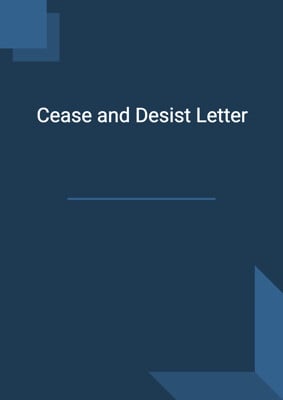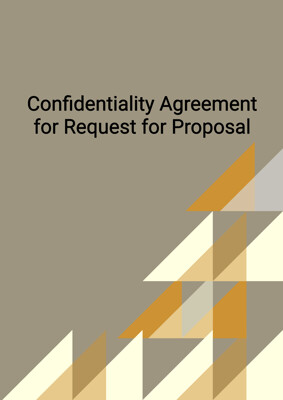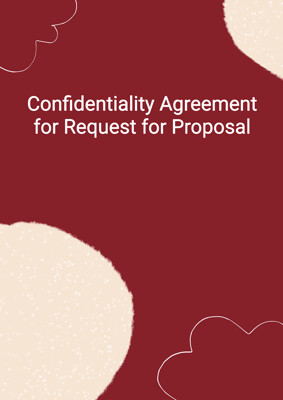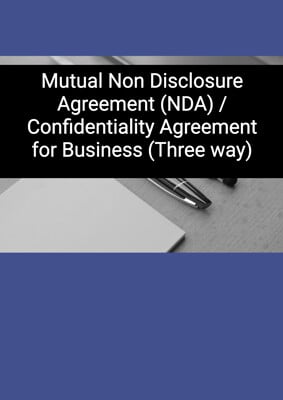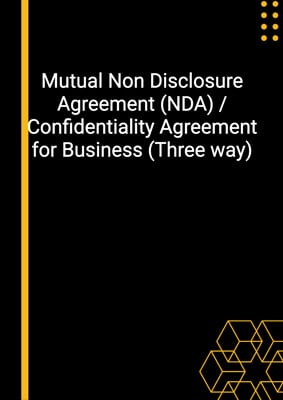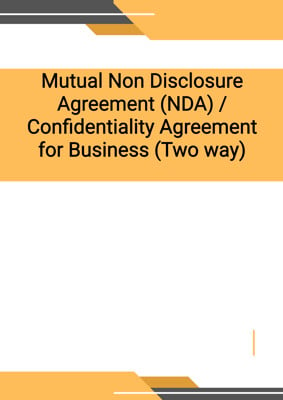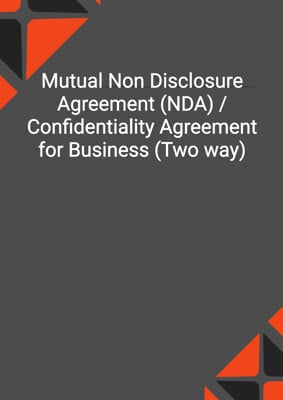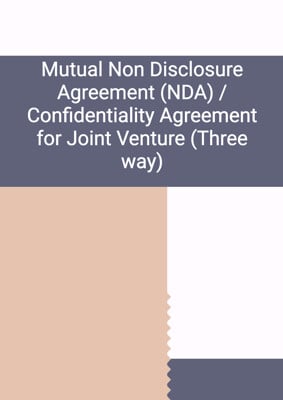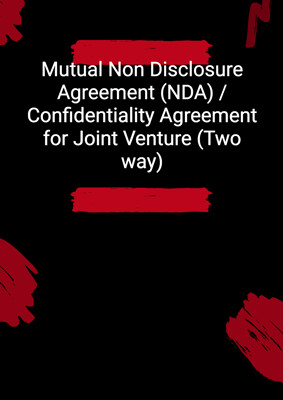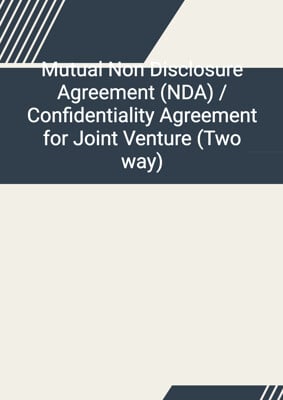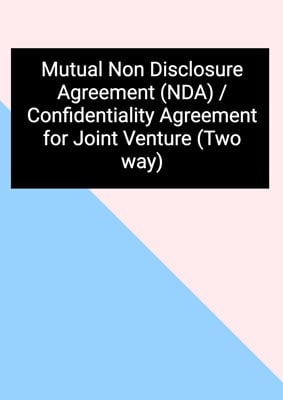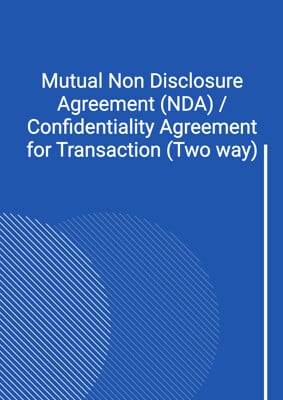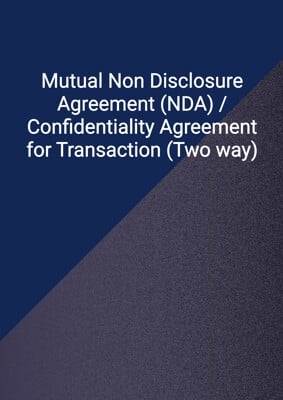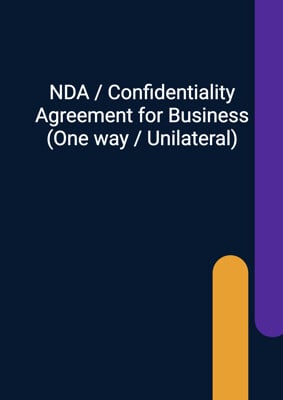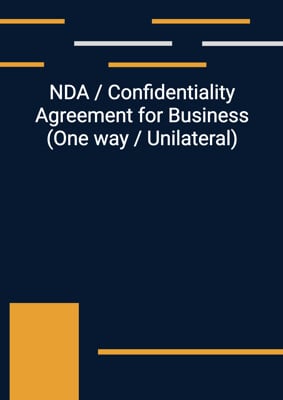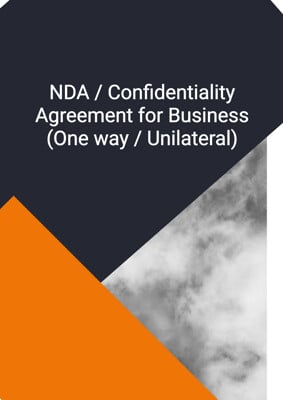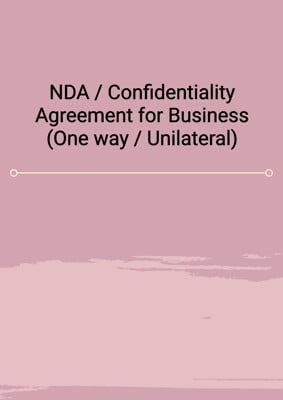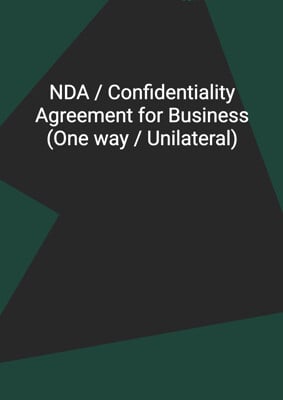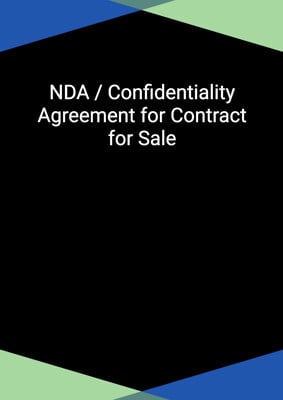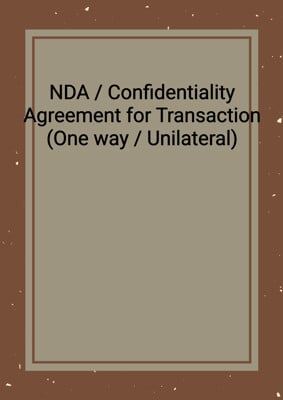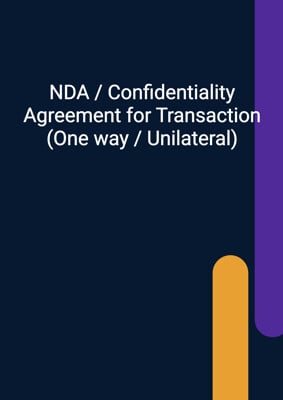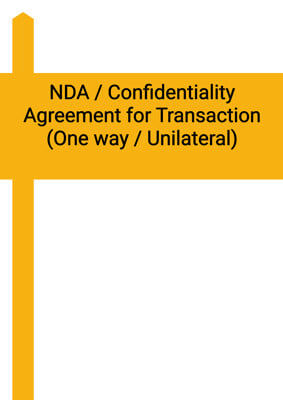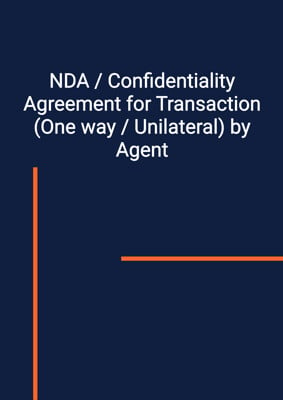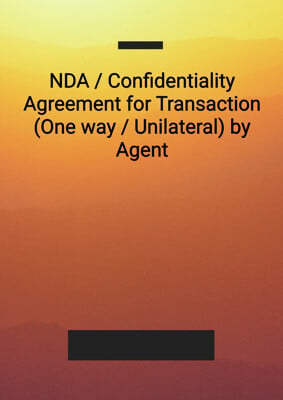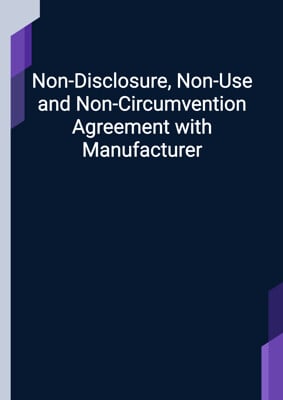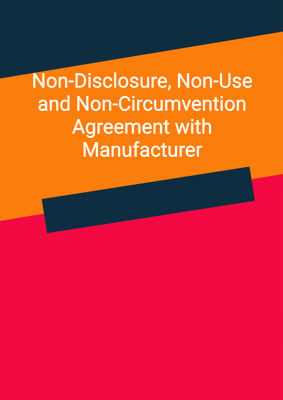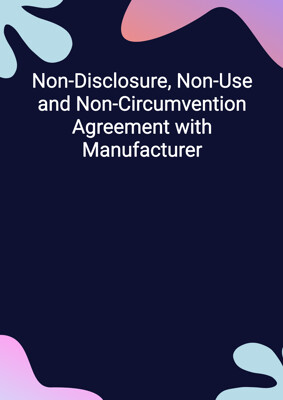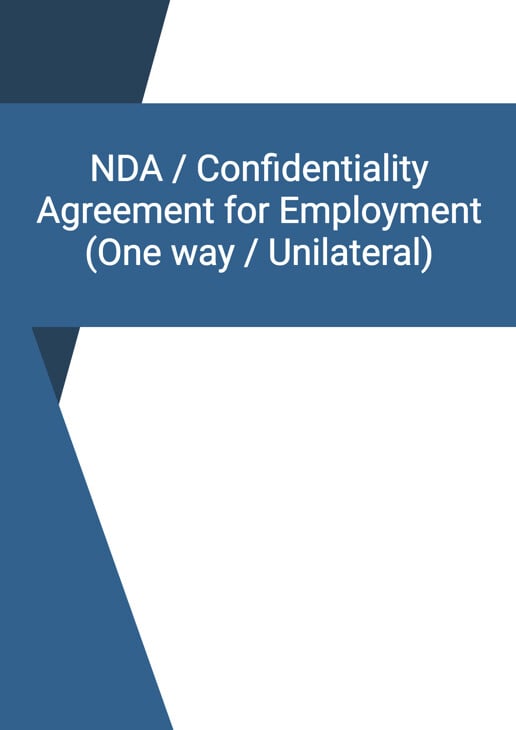
NDA / Confidentiality Agreement for Employment (One way / Unilateral)
Employer
Protect your confidential information with a One Way Non Disclosure Agreement. This legal document creates a unilateral obligation of confidentiality on the party who receives the information, giving peace of mind to the employer.
How to Tailor the Document for Your Need?
01
Create Document
Fill in the details of the parties. You can click the "Fill with Member’s Information" button to complete it with information saved to your account.
02
Fill Information
Please fill in any additional information by following the step-by-step guide on the left hand side of the preview document and click the "Next" button.
03
Get Document
When you are done, click the "Get Document" button and you can download the document in Word or PDF format.
04
Review Document
Please get all parties to review the document carefully and make any final modifications to ensure that the details are correct before signing the document.
Document Preview
Document Description
This NDA / Confidentiality Agreement for Employment (One way / Unilateral) is a legal document that establishes a confidential relationship between the employer (Party 1) and the employee (Party 2). The agreement highlights the importance of protecting confidential information and outlines the obligations of both parties.
The entire document consists of several sections that cover different aspects of the agreement. The first section is the interpretation section, which defines key terms used throughout the agreement. It provides definitions for terms such as 'approved representatives,' 'associate,' 'group,' and 'information.' This section ensures that both parties have a clear understanding of the terminology used in the agreement.
The second section outlines the obligations of confidentiality. It states that the disclosee (employee) must maintain the confidentiality of the information disclosed by the discloser (employer) and use it exclusively for the purpose of performing their job duties. The section also prohibits the disclosee from copying or reproducing any part of the information without the discloser's approval.
The third section focuses on confidentiality measures. It specifies that the disclosee should only disclose the information to approved representatives who have been authorized by the discloser and are aware of the confidentiality obligations. The section also requires the disclosee to keep the information separate from other documents, apply appropriate security measures, and keep a written record of any documents or copies made.
The fourth section addresses excepted information. It states that the obligations of confidentiality do not apply to information that is already publicly available, previously known to the disclosee, or disclosed by a third party with the right to do so. The disclosee has the burden of proving the existence of these exceptions.
The fifth section covers the return of information. It requires the disclosee to return or destroy all documents and materials containing the information upon the discloser's request. The disclosee remains bound by the confidentiality obligations even after the completion of the purpose or the return/destruction of the documents.
The sixth section includes a disclaimer and warranty. It clarifies that the discloser retains all rights to the information and does not grant any intellectual property rights to the disclosee. It also states that the information is not guaranteed to be accurate or complete, and the discloser is not liable for any use of the information.
The seventh section addresses confidentiality regarding the agreement itself. It requires both parties to keep the existence and nature of the agreement confidential and obtain approval for any announcements or circulars related to the agreement.
The eighth section provides remedies for breaches of the agreement. It states that damages would not be an adequate remedy and allows the discloser to seek injunctions and specific performance. It also clarifies that no proof of special damages is necessary for enforcing the agreement.
The ninth section covers waiver. It states that a waiver of one provision does not constitute a waiver of other provisions, and the rights and remedies provided in the agreement are cumulative.
The tenth section prohibits the assignment of rights or obligations under the agreement.
The eleventh section states that the agreement represents the entire agreement between the parties and supersedes any prior representations or warranties. It clarifies that no rights or obligations are implied unless expressly stated in the agreement.
The twelfth section clarifies that the agreement does not grant any license to the parties under each other's intellectual property rights.
The thirteenth section specifies the governing law and jurisdiction for any disputes arising from the agreement.
The fourteenth section outlines the procedures for giving notices and service of the agreement.
The fifteenth section states that the agreement does not confer any rights on third parties.
The agreement is signed by the authorized representatives of both parties and includes a schedule if applicable.
How to use this document?
To use this NDA / Confidentiality Agreement for Employment (One way / Unilateral), follow these steps:
1. Review the agreement: Read the entire agreement carefully to understand its terms and obligations.
2. Fill in the parties' information: Enter the names and addresses of both parties in the agreement. Party 1 refers to the employer, and Party 2 refers to the employee.
3. Understand the purpose: Familiarize yourself with the purpose of the agreement, which is to establish a confidential relationship between the parties.
4. Interpretation: Refer to the interpretation section to understand the meanings of key terms used throughout the agreement.
5. Obligations of confidentiality: Take note of the obligations outlined in this section. The disclosee (employee) must maintain the confidentiality of the information and use it exclusively for the purpose of their job duties.
6. Confidentiality measures: Follow the guidelines in this section to ensure the proper handling of the disclosed information. Only disclose the information to approved representatives, keep it separate from other documents, and apply appropriate security measures.
7. Excepted information: Understand the exceptions to the obligations of confidentiality. The disclosee is not bound by confidentiality for information that is publicly available, previously known, or disclosed by a third party with the right to do so.
8. Return of information: Be prepared to return or destroy all documents and materials containing the information upon the discloser's request.
9. Disclaimer and warranty: Acknowledge that the discloser retains all rights to the information and is not liable for its accuracy or completeness.
10. Confidentiality of the agreement: Keep the existence and nature of the agreement confidential and obtain approval for any announcements or circulars related to it.
11. Remedies: Understand that the discloser can seek remedies such as injunctions and specific performance for breaches of the agreement.
12. Waiver: Note that a waiver of one provision does not waive other provisions, and the rights and remedies provided in the agreement are cumulative.
13. Assignment: Do not assign any rights or obligations under the agreement without prior consent.
14. Entire agreement: Understand that the agreement represents the entire understanding between the parties and supersedes any prior representations or warranties.
15. No license: Recognize that the agreement does not grant any rights to the parties under each other's intellectual property.
16. Governing law and jurisdiction: Be aware of the governing law and jurisdiction specified in the agreement.
17. Notices and service: Follow the procedures outlined in this section for giving notices and serving the agreement.
18. No rights for third parties: Understand that the agreement does not confer any rights on third parties.
By following these steps, you can effectively use this NDA / Confidentiality Agreement for Employment (One way / Unilateral) to establish a confidential relationship between the employer and employee and protect confidential information.
Not the right document?
Don’t worry, we have thousands of documents for you to choose from:
